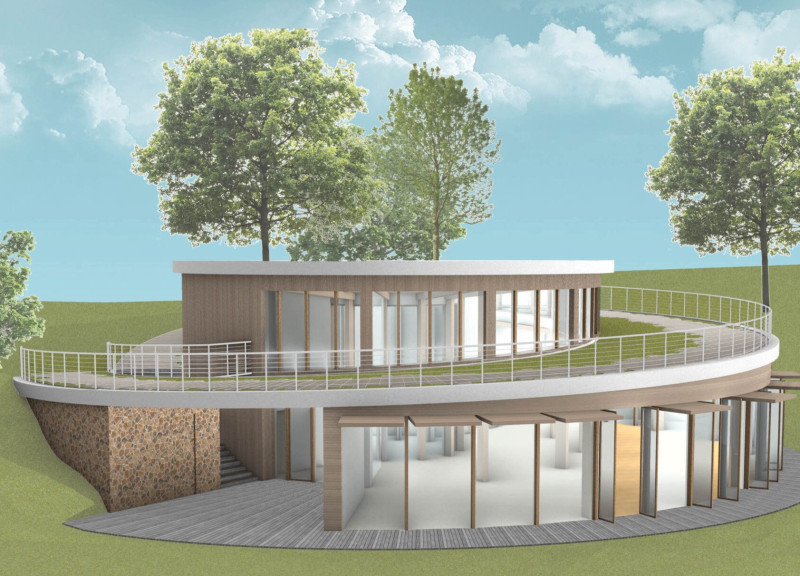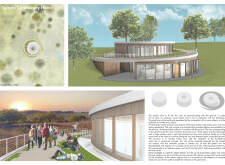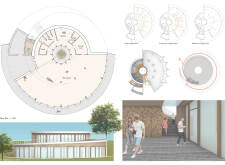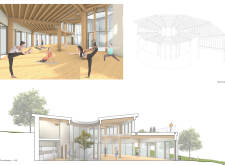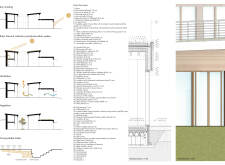5 key facts about this project
The main functional area of the Spirala Community Home is its central gathering space, which is designed for activities such as yoga classes, workshops, and community meetings. Surrounding this core are service areas, including restrooms and a kitchen that supports the main space. The project creates a seamless transition between indoor and outdoor environments, integrating the surrounding landscape into the user experience through terraces and pathways.
Unique Form and Material Choices
What sets the Spirala Community Home apart is its innovative approach to design and material selection. The use of a circular layout is not only aesthetic but serves to enhance social interaction among users. The building's primary materials include sustainably sourced wood, large glass panels, and natural stone, each chosen to minimize environmental impact while ensuring durability. The wooden structure is complemented by extensive glazing, which maximizes natural light and provides extensive views of the landscape, fostering a sense of connection with nature.
Additionally, the project incorporates a green roof system that enhances insulation properties and supports biodiversity through the cultivation of native plants. The integration of photovoltaic systems for energy generation and rainwater harvesting systems showcases the architecture’s commitment to sustainability, reducing reliance on conventional energy sources and improving water management.
Focus on Community Engagement
The design emphasizes community involvement and flexibility. Its adaptable layout allows for multiple configurations, accommodating a range of activities from informal gatherings to structured workshops. The thoughtful distribution of space encourages interaction, with areas designed to facilitate social exchange and engagement among various community groups. The architecture is not only a structure but a platform for communal activities, reinforcing the importance of shared experiences.
To gain a better understanding of the Spirala Community Home, readers are encouraged to explore detailed architectural plans, sections, and designs. These resources provide deeper insights into the project's layout, material choices, and innovative approaches to community-focused architecture.


